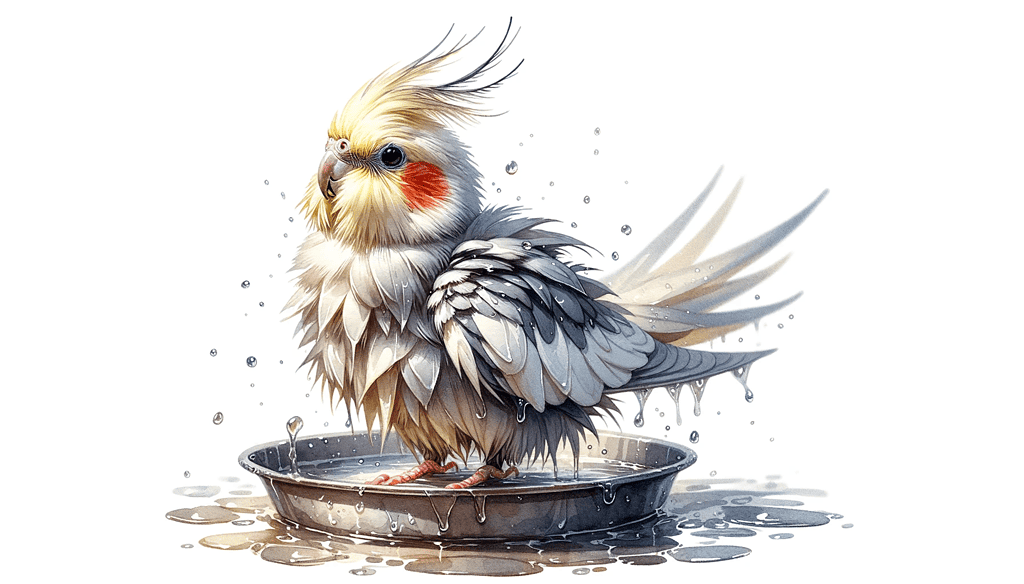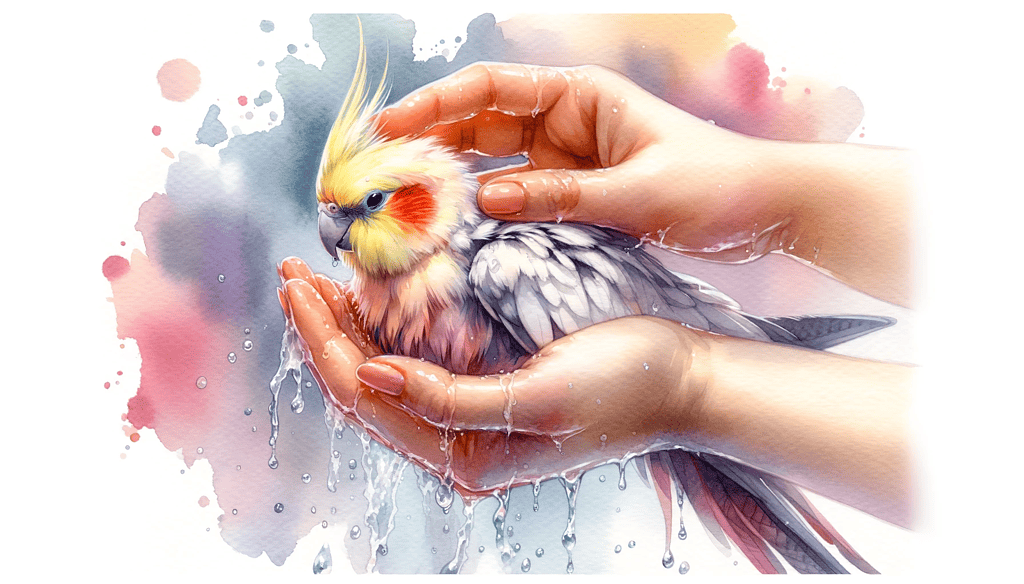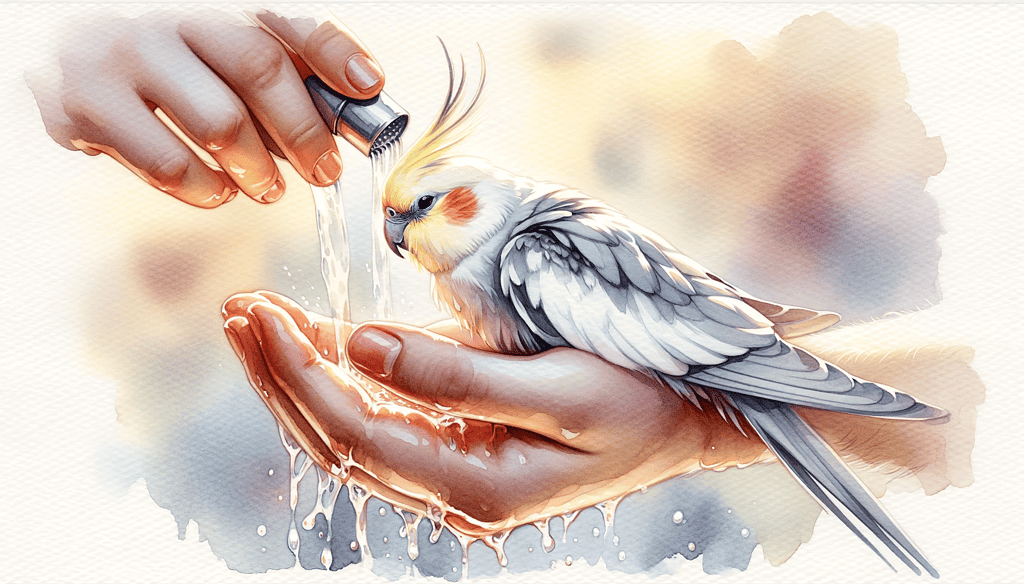
Cockatiels, with their vibrant personalities and striking appearances, have become one of the most beloved pets worldwide. But as every cockatiel owner knows, understanding their preferences is crucial for their well-being. So, do cockatiels actually enjoy getting wet?
As a general rule, cockatiels do have an affinity for water and often enjoy activities involving it. Whether it’s for hygiene, play, or simply cooling down, these birds often find pleasure in getting wet, mimicking their natural behaviors in the wild.
Dive deeper into this article to uncover the nuances of your cockatiel’s relationship with water, how to introduce them to it, and the signs to watch out for during their watery escapades.
Signs Your Cockatiel is Enjoying Being Wet
So, how can you tell if your cockatiel is having a good time during their watery escapades? Here are some indicators:
- Energetic Splashing: If your cockatiel is energetically splashing water around, it’s a clear sign they’re enjoying themselves. This behavior is similar to what they might do after a rain shower in the wild.
- Fluffing Feathers: After a good soak, a cockatiel might fluff up its feathers. This isn’t just adorable; it’s also a way for them to shake off excess water and air out their plumage.
- Chirping and Singing: Vocalizations can be a great indicator of a bird’s mood. If your cockatiel is chirping or singing during or after a bath, it’s a sign they’re content and happy.
- Dancing Movements: Some cockatiels get so into their bath time that they start to dance around, moving their feet in the water and bobbing their heads.
How Do You Know If Your Cockatiel Is Scared Of Water?

Not all water experiences are positive, though. It’s essential to recognize when your feathered friend might be feeling apprehensive or scared. Here’s what to look out for:
- Avoidance: If your cockatiel consistently avoids the water dish or moves away when you try to mist them, it’s a sign they might be uncomfortable.
- Aggressive Behavior: A scared cockatiel might become aggressive, nipping at you or the water source.
- Rapid Breathing: Just like us, birds can show signs of anxiety through their breathing. If your cockatiel’s breathing becomes rapid around water, it’s time to reassess the situation.
Remember, patience is key. Every bird is different, and what works for one might not work for another. Always prioritize your cockatiel’s comfort and well-being.
How To Introduce Your Cockatiel To Water
Introducing your cockatiel to water can be a delightful experience for both you and your feathered friend. However, it’s essential to approach this process with care and understanding. Let’s dive into how you can make this experience enjoyable for your cockatiel.
1. Choosing The Right Time And Setting
Timing is everything. Just like us, birds have their moods, and it’s crucial to introduce them to water when they’re feeling relaxed and curious. Early morning or late afternoon, when the cockatiel is most active, can be ideal times.
Creating the right environment is equally important. Here are some ideal conditions for your cockatiel’s first bath:
- Quiet Surroundings: Ensure the room is free from loud noises or sudden distractions.
- Familiar Environment: Start in a room where your cockatiel spends most of its time and feels safe.
- Warm Temperature: Ensure the room is warm enough so your bird doesn’t feel cold after getting wet.
- Natural Light: A well-lit room with natural sunlight can make the experience more pleasant.
- Supervision: Always be present to monitor your bird’s reactions and ensure their safety.
2. Methods Of Bathing

There are several ways you can introduce water to your cockatiel:
- Showering with Your Bird: Some cockatiels enjoy the gentle mist from a shower. If you choose this method, ensure the water isn’t too hot and the pressure isn’t too strong.
- Using a Shallow Dish or Bowl: This allows the bird to wade in and splash around at their own pace.
- Mist Sprays: A gentle misting can be refreshing for cockatiels, especially during warmer months.
| Bathing Method | Pros | Cons |
| Showering with Bird | Mimics natural rain; can be a bonding experience | Requires close supervision; not all birds may like it |
| Shallow Dish or Bowl | Allows bird to control depth; natural behavior | Can get messy; ensure water is clean |
| Mist Sprays | Gentle and refreshing; easy to control | Some birds might be startled at first |
3. What To Avoid
While introducing your cockatiel to water can be a fun experience, there are some pitfalls to be aware of:
- Forcing the Bird: Never force your cockatiel into the water. It should always be their choice.
- Using Cold Water: Always ensure the water is at a comfortable temperature.
- Overwhelming the Bird: Start slow and increase the water exposure gradually.
Common misconceptions about bathing cockatiels include:
- They Need Daily Baths: While some might enjoy it, daily baths aren’t necessary.
- Soap is Needed: Birds have natural oils that protect their feathers. Using soap can strip these away.
- All Birds Love Water: Each cockatiel is unique. Some might love water, while others might be indifferent or even scared.
Conclusion
Understanding your cockatiel’s relationship with water is a fascinating journey that can significantly enhance their quality of life. From playful splashes to tranquil baths, these moments of aquatic joy serve as a reminder of their natural instincts and the unique bond you share. I’ve had countless experiences with bird owners who’ve shared heartwarming stories of their cockatiels’ bath-time antics. It’s these little moments that make the journey of pet ownership so rewarding.
Did you find this article helpful? I’d love to hear your thoughts and any experiences you’ve had with your cockatiel and water. And if you think this information could benefit other bird enthusiasts, please feel free to share the article. Let’s spread the joy of understanding and caring for our feathered companions!
Frequently Asked Questions
Do cockatiels need baths?
Absolutely! Regular baths are essential for cockatiels. Bathing not only helps in keeping their feathers clean but also aids in maintaining skin health.
Can cockatiels swim?
While cockatiels enjoy getting wet and splashing around, they aren’t naturally equipped for swimming like ducks or other water birds. Their baths are more about wading and splashing than actual swimming.
Why is my cockatiel shaking after a bath?
Seeing your cockatiel shake after a bath can be a bit alarming, but often, it’s a natural behavior. Birds shake to help get rid of excess water from their feathers. However, if the shaking is accompanied by other signs of distress or if it continues for an extended period, it might be a cause for concern.
